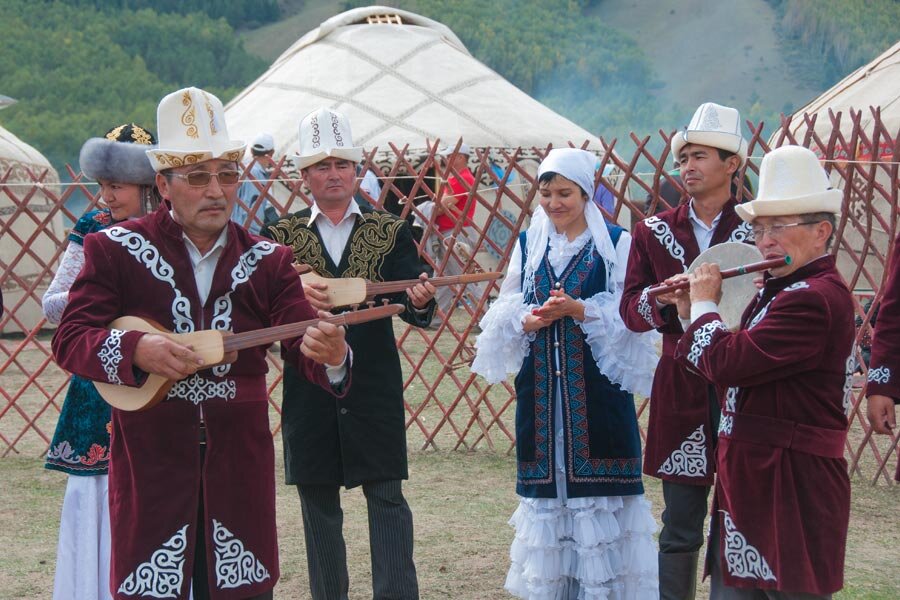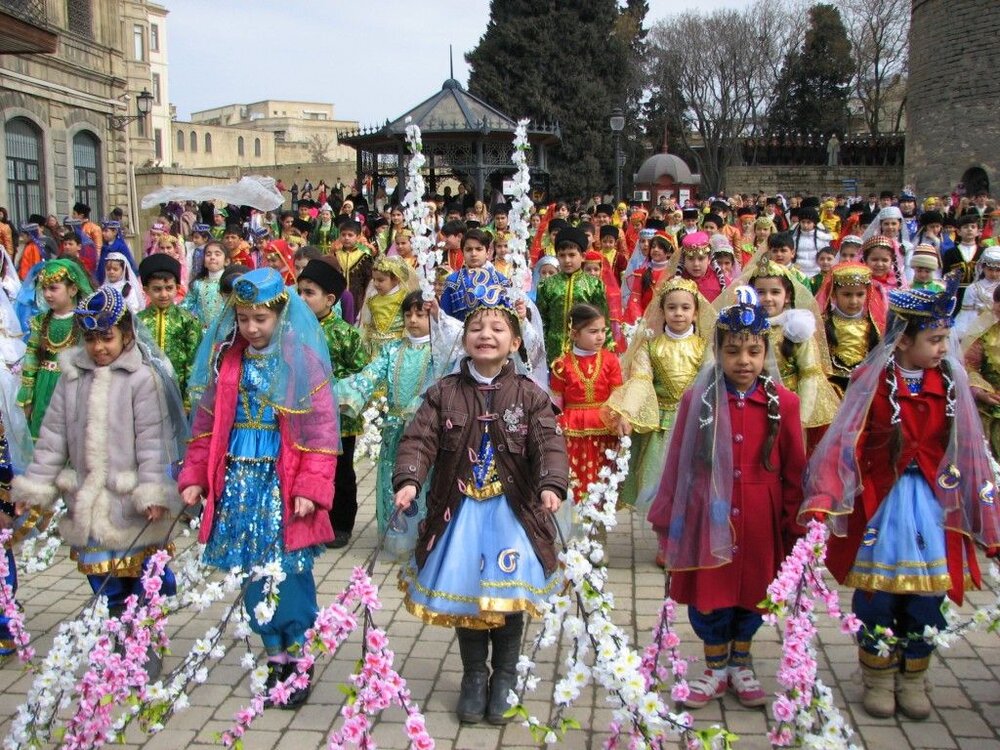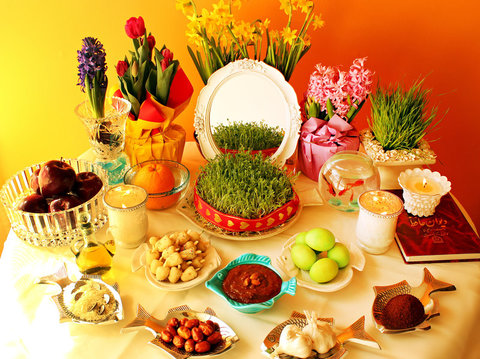Iran (IMNA) - Nowruz is celebrated by peoples of many different religions and cultures across this vast region. Some of the festival's earliest origins lie in Zoroastrianism, marking one of the holiest days in the ancient Zoroastrian calendar. The return of the spring was seen to have great spiritual significance, symbolising the triumph of good over evil and joy over sorrow. In particular, the Spirit of Noon, known as Rapithwina, who was considered to be driven underground by the Spirit of Winter during the cold months, was welcomed back with celebrations at noon on the day of Nowruz according to Zoroastrian tradition.
Over the last millennium, Nowruz has developed and expanded, incorporating new social, religious and cultural influences as it spread along the Silk Roads. Its date, originally calculated according to ancient astronomical practices, was revised and recalculated on numerous occasions in the 11th and 12th centuries as Nowruz continued to be a celebration of great social significance under various rulers and regimes. Renowned Muslim scholars, such as Abu Rayhan al-Bīrūnī (973-1048), Mahmud Kashgari (1005-1102), and Omar Khayyam (1048-1131) are among the many intellectuals who studied the date of Nowruz.
Although The traditions and customs that accompany the celebration of Nowruz vary from country to country, there are many unifying features. In most regions, symbolic preparations fire and water take place before the festival, and ritual dances involving leaping over fires and streams are performed. In Iran, these dances take place on the last Wednesday before Nowruz, known as Chārshanbeh Sūrī or Chārshanbeh-e Ātash, while in Azerbaijan, this practice is carried out over the four Wednesdays preceding the celebrations. In many places, households fill up their supplies of water on the last Wednesday of the year, and in Kyrgyzstan, all vessels in the house are to be filled on Nowruz Eve, in the hope that this will bring abundance in the new year and keep away misfortune. It is also customary across most regions to visit cemeteries before the Nowruz celebrations begin, with visitors bringing candles and offerings to remember the dead. Two candles are commonly placed at the door to the house on Nowruz Eve in Kazakhstan. In Azerbaijan, the dead are commemorated on the second day of Nowruz, known as the “Day of Fathers”.

On the day of Nowruz, there is much feasting, visiting family members and friends, and exchanging gifts. A wide range of cultural performances and traditions also take place. Children are often given small toys, and traditionally play with colourfully painted eggs. Families and within communities share a symbolic meal, often consisting of cooked rice and vegetables combined with many local ingredients. In Kyrgyzstan, this meal is a public ceremony, with designated areas set aside in towns for the preparation of Nooruz Kedje or Chon Kedje, a type of soup made from bull's meat.
One widespread tradition is the preparation of a Nowruz table, on which a number of symbolic objects are placed. While these tables differ slightly from region to region, the most common features are: water, candles, dishes of green sprouts (or Sabzeh), a traditional dish made out of crushed wheat sprouts, mirrors, eggs, and various fruits. These objects symbolise purity, brightness, abundance, happiness and fertility for the new year. In Iran, the table is referred to as the “Sofreh-ye Haft Sin”, and displays seven objects, each starting with the letter 'S'. A similar table is set in areas of India.
Nowruz is also the occasion for traditional cultural activities, combining common practices with local customs. Poetry is a popular feature of Nowruz celebrations, with ' Nowruzi poems' being written, published and recited around the time of the festival. Music is also very important, and many of the countries that celebrate Nowruz have their own traditional folk songs specifically for the festival. In Uzbekistan, Nowruz songs are performed by traditional singers and story tellers, such as the baxshi, shoirs and dostonchi. Similarly, in Kyrgyzstan, competitions take place between Akayns, epic story tellers or bards who improvise tales about Nowruz. A wide variety of traditional dances performed during the celebrations.

Open air festivities such as the game of Kopkari, wrestling and horse racing often take place to celebrate Nowruz in Uzbekistan, and similarly, in Kyrgyzstan, traditional horsemanship is displayed as part of the festivities, with communities coming together to enjoy horse racing, Kyz Kuumay (a race in which men chase after women on horseback), Enish (wrestling on horseback), and Jamby Atuu (shooting from horseback).
These annual traditions to welcome the spring have been passed on from generation to generation throughout the last millennium, Nowruz provides an opportunity not only to enjoy ancient cultural customs and traditional songs, music, dancing, rituals, foods and story-telling, but also to promote peace and solidarity within towns and communities and to strengthen deep-rooted bonds of friendship and exchange.
In recognition of the importance of this ancient rite, Nowruz was inscribed on UNESCO’s Representative List of the Intangible Cultural Heritage of Humanity in 2009. Moreover, in 2010, the United Nations General Assembly proclaimed 21 March International Nowruz Day.
UNESCO


Your Comment